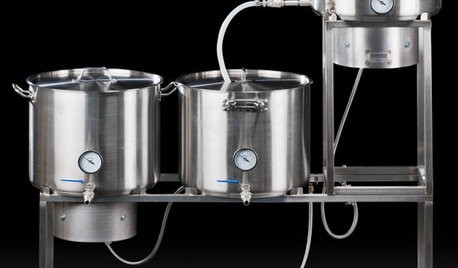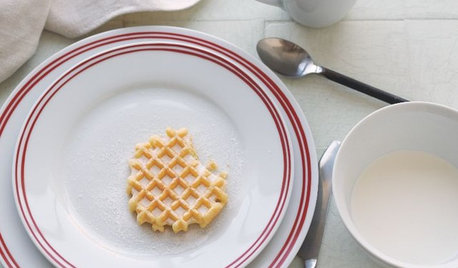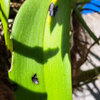Sterilizing pots
silver77
17 years ago
Related Stories

UNIVERSAL DESIGNHouzz Tour: Accessibility Meets Contemporary on an Austin Hilltop
Banish all thoughts of sterile schemes. This new build in Texas features universal design in warm, comfortable style
Full Story
FARM YOUR YARD9 Ways to Change Up Your Vegetable Garden for the Coming Season
Try something new for edible plantings that are more productive than ever
Full Story
HOME TECHMake Home Sweet Home Even Sweeter With a Brewery Or Winery
New high-tech products make small-scale home beer and wine production easy and fun
Full Story
PRODUCT PICKSGuest Picks: Take Your Kitchen Back to a Simpler Time
Give your kitchen a comfortingly classic feel with appliances, furnishings and accessories styled for the good old days
Full Story
SHOP HOUZZShop Houzz: A Home Office for Every Style
Build a traditional, contemporary, eclectic, farmhouse, midcentury, transitional or industrial home office
Full Story
KITCHEN DESIGNNew This Week: 4 Ways to Punch Up a White Kitchen
Avoid the hospital look by introducing a bit of color, personality and contrast
Full Story
COLOR9 Decorating Ideas for White Living Rooms
These inspiring living rooms show how good an (almost) all-white room can look
Full Story
BEFORE AND AFTERSBasement of the Week: Surprises Around Every Corner
With a secret door, games galore and walk-out access to the yard, this Prairie-style basement in Minneapolis never fails to entertain
Full Story
BATHROOM WORKBOOKBathroom Workbook: Layer on the Texture for High Bath Style
Make even a modern bath warm and welcoming with these 11 ideas for adding texture
Full Story
BEFORE AND AFTERSReader Project: California Kitchen Joins the Dark Side
Dark cabinets and countertops replace peeling and cracking all-white versions in this sleek update
Full StorySponsored
Franklin County's Full Service, Turn-Key Construction & Design Company
More Discussions









jane__ny
richardol
Related Professionals
Norfolk Landscape Architects & Landscape Designers · Clemson Landscape Architects & Landscape Designers · Maple Heights Landscape Architects & Landscape Designers · Hendersonville Landscape Contractors · Point Pleasant Landscape Contractors · West Orange Landscape Contractors · Greenfield Landscape Contractors · Arizona City General Contractors · Homewood General Contractors · Klahanie General Contractors · Livermore General Contractors · Mishawaka General Contractors · Redan General Contractors · Spencer General Contractors · Joppatowne General Contractorsmehitabel
orchidshirley
jane__ny
highjack
orchidguyftl
rhonda_in_fl
ifraser25
petite_orange
siguccs
gbrendemuehl